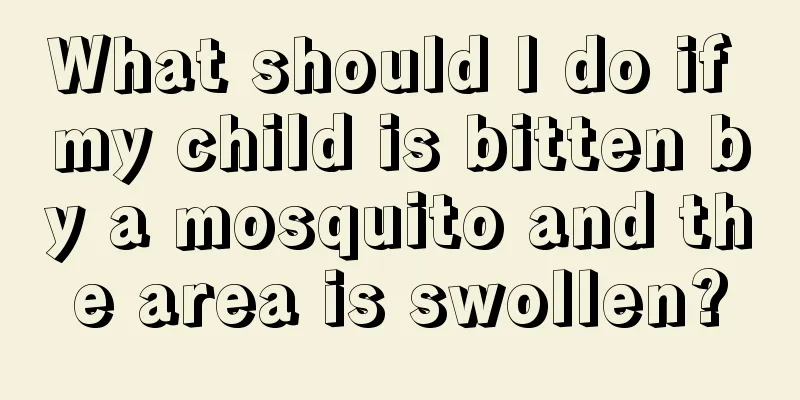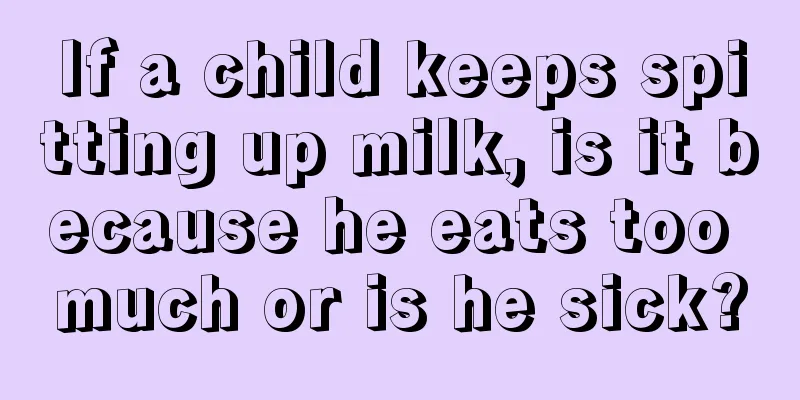Child's nosebleed

|
Nosebleeds are a common phenomenon. Most people may have experienced nosebleeds. There are many reasons for nosebleeds. Nosebleeds occur when the nose is hit, when people get angry or too excited, and when a person has cardiovascular problems. So why do children have nosebleeds? 1. Use your thumb and index finger to pinch the child's nostrils on both sides, press the front of the nasal septum, and let the child breathe through his mouth. Parents should use their thumb and index finger to pinch the nostrils on both sides for about 10-20 minutes (if you are sure which nostril is bleeding, you can directly press the bleeding nostril). Many parents first think of using paper towels to block the bleeding. In fact, the pressure of paper towels is usually not enough to stop the bleeding. Moreover, paper towels are not sterilized and can easily induce infection. While compressing the nostrils, sit down with your head slightly tilted forward and downward so that you can spit out the blood in your mouth. Instead of asking their children to hold their heads up like many parents do. Because when the child raises his head, the blood will be swallowed involuntarily, which will irritate the gastrointestinal tract and cause nausea, vomiting, etc. Especially when the amount of bleeding is large, aspiration may occur. 2. Apply cold water to the child’s forehead and nose. When a small amount of bleeding occurs, parents can use ice packs or wet towels to cool the forehead and neck, or rinse the mouth with cold or ice water to constrict blood vessels and reduce bleeding. 3. Use clean cotton wool or soft tissue paper to plug the child's nasal cavity and apply pressure to stop the bleeding. After the bleeding stops, observe for more than 1 hour before gently removing the blockage. 4. For older children whose fontanelles have closed, you can press the Xing point on the fontanelle to help stop the bleeding. Shangxing point is located 1 inch behind the front hairline on the midline of the head. Note: The 1 cun here is equal to the width of the child’s thumb, not the 1 cun of the city ruler. 5. If the nose bleeding cannot be stopped after taking the above measures, or the child is bleeding heavily and is accompanied by pale face, cold sweats, rapid heart rate, etc., the child should be sent to the hospital immediately. In addition, if the child has recurrent nosebleeds, he or she should also go to the hospital for examination to see if there is rhinitis, foreign body in the nasal cavity, nasal and nasopharyngeal tumors or blood disease. 6. If your child often has nosebleeds and no systemic diseases are found, you can pick some "thorny vegetables" and boil them in water for your child to drink. The traditional Chinese medicine name of "thorny vegetables" is small thistle, and the whole plant is used as medicine. To prevent children from nosebleeds, you should pay attention to preventing the indoor air from being dry and preventing colds. Don't let your child pick his nose. If your child has nasal mucus that is difficult to dig out, you should first drop a drop of clean water, wait a moment, and then gently rub it out. Usually, you should give your children more fruits and vegetables to prevent them from having dry stools. |
<<: Baby's tonsils are purulent and have a fever
>>: Tips for treating dry cough in three-month-old babies
Recommend
Is it good for babies to eat walnut porridge?
Many people usually eat some nuts, because nuts c...
Normal uric acid levels in children
Most people with high uric acid levels are older ...
What are the symptoms of encephalitis in children?
Some children will have some acute infectious dis...
Air conditioning temperature in baby room in summer
Nowadays, every household is equipped with air co...
What are the symptoms of heart disease in children?
Heart disease is a common circulatory system dise...
How many times a day is normal for babies under one month old?
When seeing a baby who is less than a month old, ...
What are the methods for children to nourish their stomachs?
Many children have not developed good habits of a...
How to effectively treat children’s teeth grinding when sleeping?
Many parents will find that their children grind ...
What is the reason for the child's leg pain?
Children nowadays are exercising less and less. T...
Newborn baby has an extra thumb
A newborn baby with an extra thumb is a common co...
What are the treatments for tonsillitis in children?
Tonsils are a barrier to health. They are located...
Why doesn’t my four-month-old baby sleep during the day?
When the baby is four months old, he will enter a...
What complementary food should babies eat when they have a cold?
Baby colds are a common pediatric disease. The oc...
Causes of stuttering in children
There are many reasons for children to stutter. I...
At what age do children usually start to lose their teeth?
A child's every move is what parents care abo...









